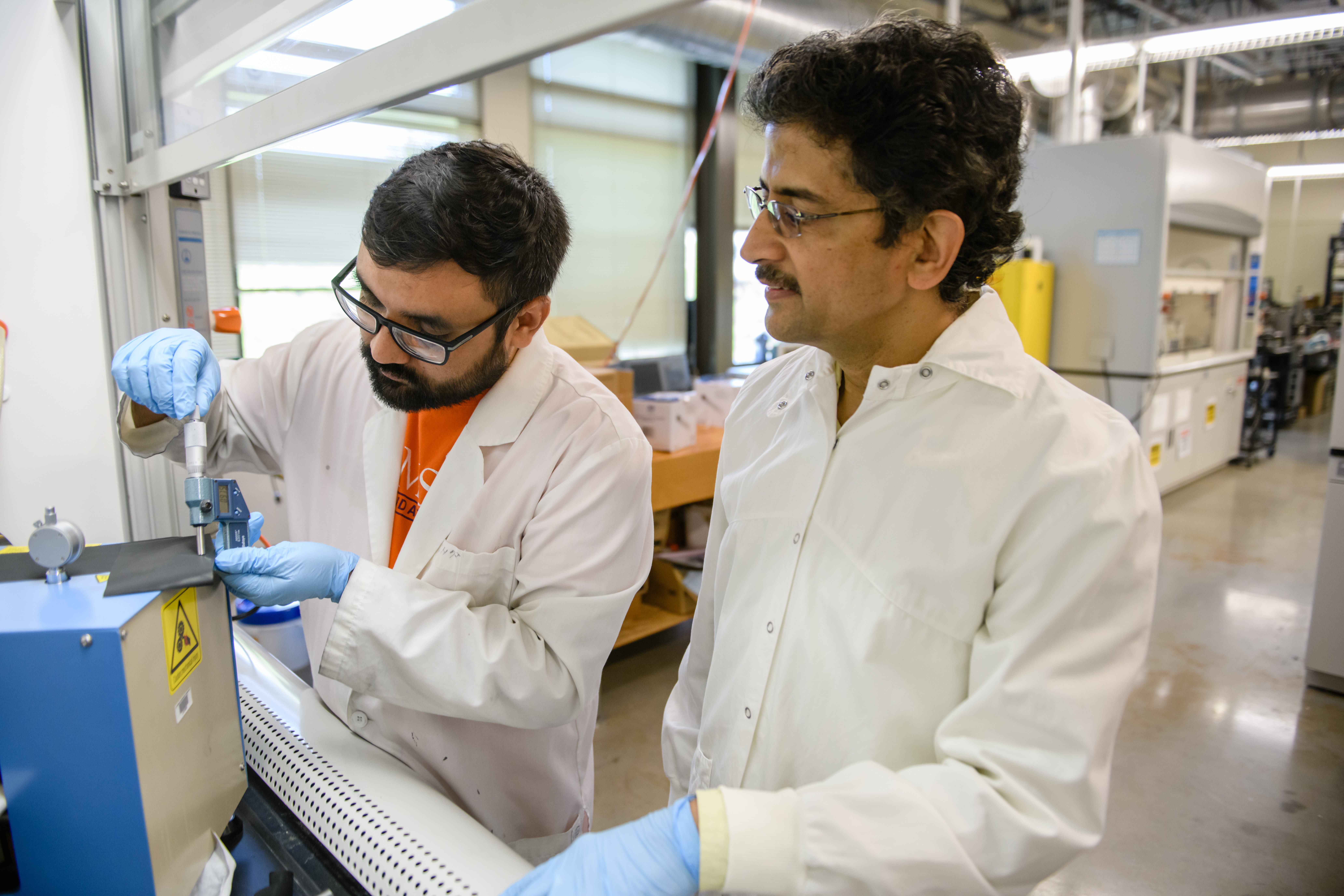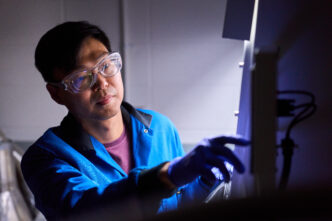Clemson University scientist Apparao Rao is working with a team of researchers to create a new generation of batteries with the potential to provide critical backup storage for the nation’s stationary energy storage, such as the power grid.
Nascent potassium-ion battery technology has the potential to be both cheaper and safer than conventional lithium-ion batteries and can therefore complement lithium-ion batteries, despite a lower energy density, said Rao, the founding director of the Clemson Nanomaterials Institute. Energy density is not the most important consideration for the grid. Safe operation, affordability and low maintenance costs are also important.
Many applications use lithium-ion batteries, from electric cars to cell phones to battery-driven power tools. They have the highest energy density, but their flammable nature makes them potentially hazardous for large-scale stationary energy storage.
“The main problem with lithium-ion batteries is that they can catch fire. The reason they catch fire is that the juice in them—the electrolyte—is organic, and flammable, so whenever a [Li-ion] battery ruptures … it can burst into flames,” said Rao, the R. A. Bowen Professor of Physics in the College of Science’s Department of Physics and Astronomy.

During their research, Rao and his collaborators in China made a functioning “pouch-type” aqueous potassium-ion full battery. When they cut into the pouch, not only did the potassium-ion cell not burst into flames, it continued to work despite the damage inflicted, he said.
Cheaper and more plentiful
Another advantage of aqueous potassium-ion batteries over their lithium-ion counterparts is that potassium is much cheaper and more plentiful than lithium. Potassium is the 7th most abundant element on Earth, while lithium is only the 33rd most abundant element, Rao said. Not only is lithium much rarer than potassium, but it also does not naturally occur in its elemental form because of its high reactivity to other elements.
While potassium is more desirable than lithium, it presents its own set of challenges for battery technologies. Potassium features a lower energy density than lithium, and there is also a relative dearth of materials suited to act as cathodes in a potassium-ion battery. Cathodes are critical for developing potassium-ion batteries. Potassium ions are relatively large compared to lithium ions and cannot easily move in and out of cathode structures. Prussian blue, an artificial pigment created in the early 1700s once used to dye Prussian uniforms, is currently being used for cathodes in several potential storage solutions. Rao and scientists from China adapted Prussian blue analogs (PBA) for their potassium-ion battery research but found that the PBA molecules would “break” when used.
“The PBA has a cage-like structure with manganese atoms at the corners,” Rao said. “The potassium ions move in and out of the cage during the discharge and charge cycles of the battery. When the PBA comes into contact with electrolytes, it dissolves [the manganese atoms] and creates vacancies during the battery operation. These vacancies weaken the cage and cause the cage to fall apart when potassium enters the cage.”
The team overcame the problem by adding iron ions to the electrolyte to “nano-engineer” the PBA surface.
Improved stability
“We used a special electrolyte that stabilizes the PBA cages,” he explained. “In our approach, iron ions fill the vacancies left by the dissolved manganese and makes the cage more robust.” As a result, the potassium-ion batteries with nano-engineered surfaces cycled more than 130,000 times (more than 500 days) with a negligible loss in performance.
“What is surprising is that the iron ions occupy the vacancies within the first 10 cycles and stabilize the cage so that the battery can then sustain for thousands of cycles. In other words, the cages self-repair within the first ten cycles during battery operation by plugging the vacancies [left by dissolved manganese] with iron.” Rao said.
Even with its improved stability, however, Rao said he doesn’t see potassium-ion batteries replacing their lithium-ion cousins, mainly because of lithium-ion batteries’ superior energy density. But potassium-ion batteries could surpass Li-ion batteries in some applications, Rao said, notably including backing up the energy grid. It is also exciting that graphite can be used as the negative electrode in potassium-ion batteries, and the existing lithium-ion battery production lines can be used to manufacture them, which greatly reduces the manufacturing cost, he said.
Rao noted the recent tornadoes that ripped through several states, leaving a path of destruction in their wake, and the disastrous impact similar catastrophes could have on nonmobile Li-ion storage systems. “If you have lithium-based grid storage, it is potentially flammable. So, potassium-ion batteries, such as those discussed in our study, are a nice substitute,” he said.
The journal Nature Sustainability published the findings in a paper titled “Surface-Substituted Prussian Blue Analogue Cathode for Sustainable Potassium-ion Batteries.” In addition to Rao, the research team included Junmin Ge, Ling Fan and Bingan Lu of the School of Physics and Electronics, Hunan University in Changsha, China; and Jiang Zhou of the School of Materials Science and Engineering, Central South University, also in Changsha.
The College of Science pursues excellence in scientific discovery, learning and engagement that is both locally relevant and globally impactful. The life, physical and mathematical sciences converge to tackle some of tomorrow’s scientific challenges, and our faculty are preparing the next generation of leading scientists. The College of Science offers high-impact transformational experiences such as research, internships and study abroad to help prepare our graduates for top industries, graduate programs and health professions. clemson.edu/science







